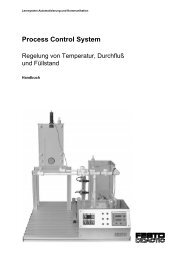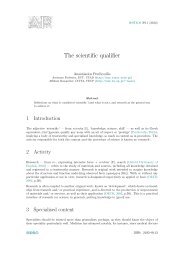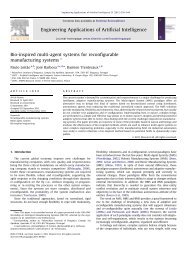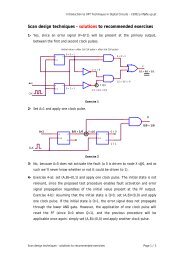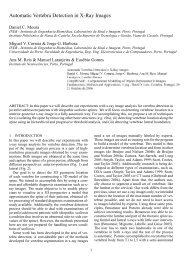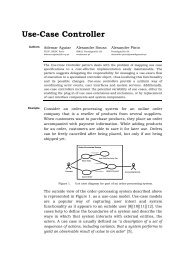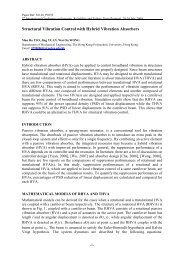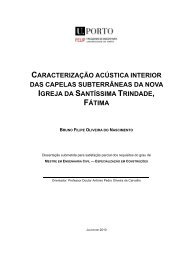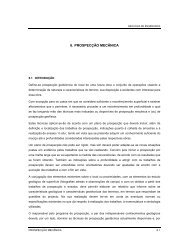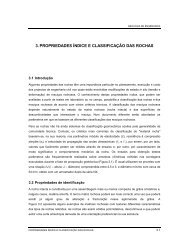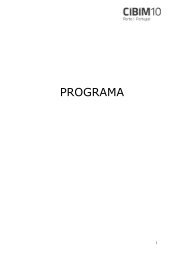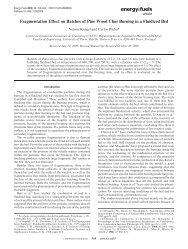MASTER IN CIVIL ENGINEERING - Faculdade de Engenharia da ...
MASTER IN CIVIL ENGINEERING - Faculdade de Engenharia da ...
MASTER IN CIVIL ENGINEERING - Faculdade de Engenharia da ...
You also want an ePaper? Increase the reach of your titles
YUMPU automatically turns print PDFs into web optimized ePapers that Google loves.
Structural Analysis II<br />
Credits Contact Time Total Time<br />
7 ECTS 90 188<br />
Objectives, Skills and Learning Outcomes<br />
Presentation and quarrel of the method of displacements, matrical formularization, for<br />
analysis of reticulated structures in linear regimen, plain and three-dimensional, and<br />
its point of view <strong>de</strong>velopments of its practical application, namelly if it relates to its use<br />
in the automatic calculation. Presentation of the general aspects of the method of the<br />
finite elements. Dynamic analysis of structures applied simple the structural systems.<br />
Introduction to the geometric non linear analysis and plastic analysis. The study of the<br />
structural methods analysis is followed by the concern to increase the <strong>de</strong>gree of<br />
un<strong>de</strong>rstanding of the structures behavior, of the point of view of the distribution of<br />
efforts and displacements.<br />
Program<br />
Ch1 - Matrix Analysis using Displacement Method<br />
Matrix form of Displacement Method. Assembling stiffness matrices of bars and<br />
composition of global stiffness matrix of the structure. Using matrix analysis to<br />
structures with sloped bars. Transformation matrix of displacement and forces from<br />
local to global axis. Sistematization of displacement method matrix formulation.<br />
Introduction to structural computer analysis. General outline of a computer program<br />
for structural analysis. Analysis of 3D bar structures and presentation of the<br />
corresponding matrix formulation.<br />
Ch2 - Introduction to Finite Element Method<br />
General aspects of formulation and analogy with displacement method. Shape<br />
functions and element stiffness matrix. Main types of elements and its application: 2D<br />
and 3D elements; slabs; shells. Practical uses of FEM.<br />
Ch3 - Hardy-Cross method<br />
Introduction to the method. Notion of distribution and transmission coefficient.<br />
Particular cases of HC method. Application of HC method to structures with freedom of<br />
displacement of no<strong>de</strong>s. Indirect HC method. Analysis of a structure consi<strong>de</strong>ring<br />
different number of unknowns. relationship between the different types of stiffnes<br />
matrices. Matrix con<strong>de</strong>nsation.<br />
Ch4 - Introduction to Structural Dynamics<br />
Basic concepts of Structural Dynamics. Formulation of the fun<strong>da</strong>mental equation of<br />
dynamic equilibrium. Free movement without <strong>da</strong>mpening. Notions of frequency and<br />
vibation period. Free movement with <strong>da</strong>mpening. Notion of <strong>da</strong>mpening coefficient.<br />
Response to a sine- wave action. Factor of dynamic amplification. Ressonance<br />
response. Response to a sine-wave action with <strong>da</strong>mpening.<br />
Detrmination of the response to any type of action using the <strong>de</strong>composition with<br />
Master in Civil Enginerring Page 25



